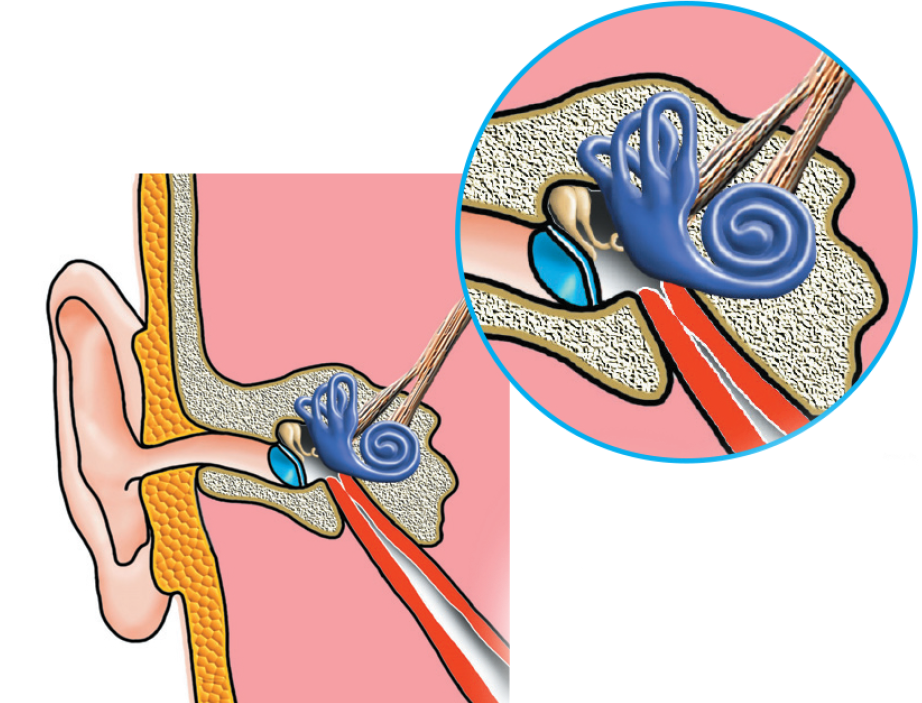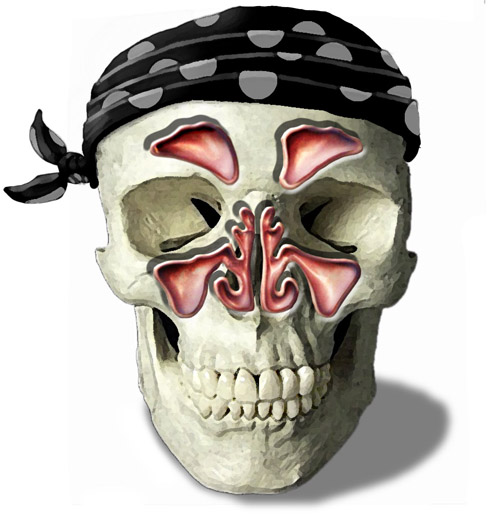Most of the diver's body isn't directly affected by changes in the environmental pressure. The reason for this is because the human body is made up mainly of tissues, that have similar attributes as liquid attributes, and are therefore not affected directly (their volume won't change) by pressure changes. In certain areas of the body, air cavities exist. These areas will be affected directly by changes in the environmental pressure. The problems which may occur due to influences of the pressure on the various air cavities will be explained extensively in the "Diving Risks" chapter.

The air cavities in the body that are affected by the change of pressure when diving are: The lungs, mouth and nose cavity (including the throat), middle ear and sinuses. Further air cavities may be created in certain circumstances in the teeth (bad fillings) and in theintestines.
While diving, air cavities that have to do with diving equipment are also formed: The air space in the mask as well as air between the suit and body.
From the auricle, a canal leads into the skull. This is the outer ear. It ends with a flexible membrane - the eardrum. Behind the eardrum is the middle ear cavity. This cavity is near the inner ear, where the hearing organs and vestibules (balance system) are located. Inside the middle ear, three delicate bones exist: The maleus, incus and stapes, which are the hearing bones that transfer the motions caused by sound waves from the eardrum to the inner ear's hearing organ. In the middle ear's lower cavity, there is a thin canal connecting this cavity with the nose and mouth cavity. This tunnel is called the Eustachian Tube, or the auditory tube.

The sinuses are cavities within the skull that are connected by thin canals to the nose cavity. Seven sinuses exist that may be affected by the changes of pressure when diving. Two are located above the eye hollows, two above the upper jaw and two on each side of the nose. Another sinus, the seventh, is located between the back of the mouth and nose cavity and the brain cortex. The sinuses are cavities in the skull bone and their inner part is covered by a mucous tissue rich in blood vessels (similar to the mouth cavity).

It is not possible to copy content from this course.
If the course is interesting you can share it with your friends
In order to take the following knowledge exem,
you must review all the topics of this chapter
In order to move on to the next chapter
You must pass the previous chapter exam.
In order to start the final exam
You must complete the entire course
To move on to the next chapter
You are required to pass the exam for this chapter.
This content can be viewed
Only by purchasing the full course
purchase this course